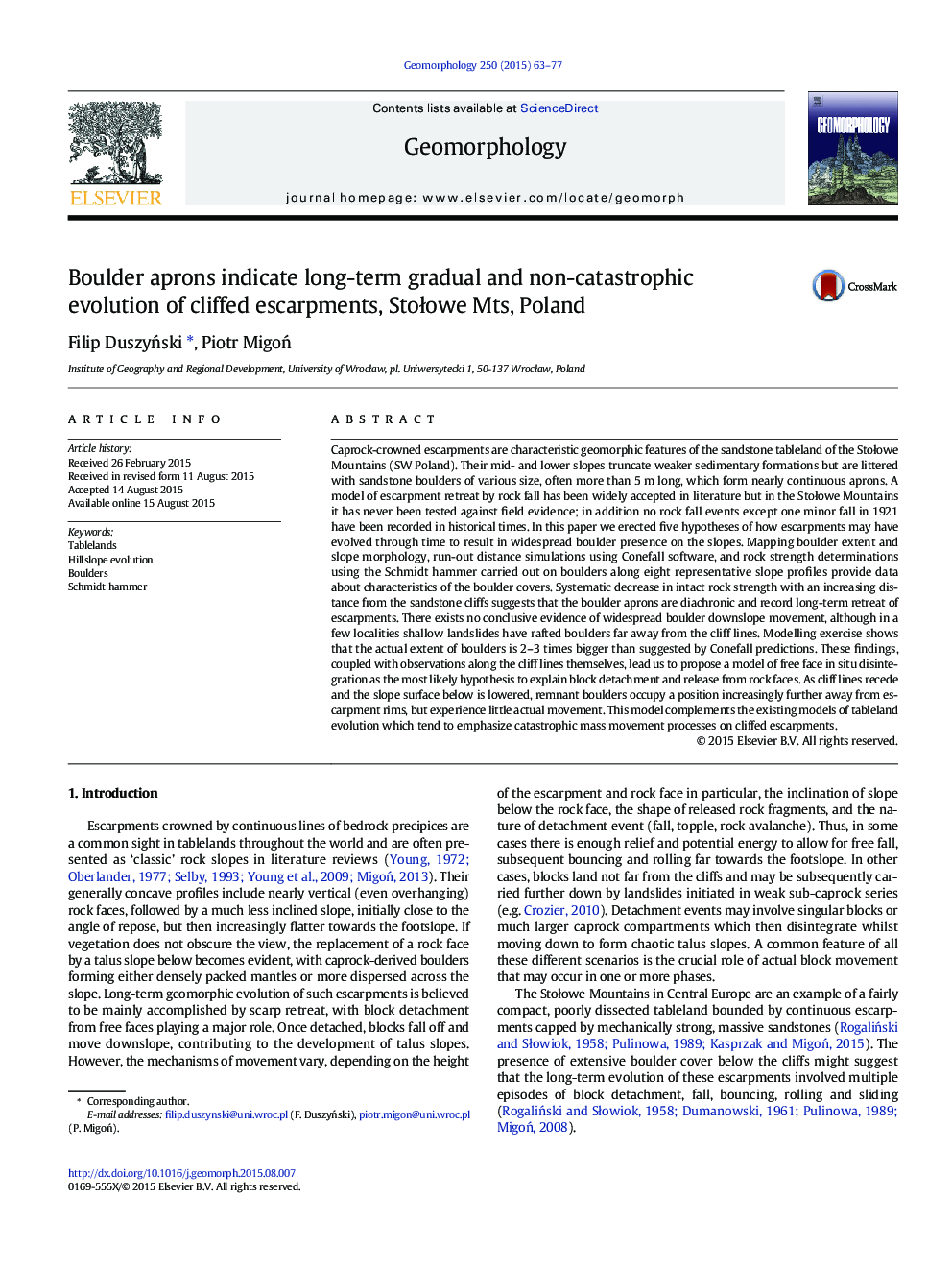| کد مقاله | کد نشریه | سال انتشار | مقاله انگلیسی | نسخه تمام متن |
|---|---|---|---|---|
| 6431777 | 1635399 | 2015 | 15 صفحه PDF | دانلود رایگان |

- Boulders on slopes help to recognize how the sandstone escarpments evolved.
- Talus-like cover deposits do not necessarily indicate rock fall.
- Schmidt hammer tests useful to establish diachronic nature of boulder cover
- Free face in situ disintegration model is proposed.
Caprock-crowned escarpments are characteristic geomorphic features of the sandstone tableland of the StoÅowe Mountains (SW Poland). Their mid- and lower slopes truncate weaker sedimentary formations but are littered with sandstone boulders of various size, often more than 5Â m long, which form nearly continuous aprons. A model of escarpment retreat by rock fall has been widely accepted in literature but in the StoÅowe Mountains it has never been tested against field evidence; in addition no rock fall events except one minor fall in 1921 have been recorded in historical times. In this paper we erected five hypotheses of how escarpments may have evolved through time to result in widespread boulder presence on the slopes. Mapping boulder extent and slope morphology, run-out distance simulations using Conefall software, and rock strength determinations using the Schmidt hammer carried out on boulders along eight representative slope profiles provide data about characteristics of the boulder covers. Systematic decrease in intact rock strength with an increasing distance from the sandstone cliffs suggests that the boulder aprons are diachronic and record long-term retreat of escarpments. There exists no conclusive evidence of widespread boulder downslope movement, although in a few localities shallow landslides have rafted boulders far away from the cliff lines. Modelling exercise shows that the actual extent of boulders is 2-3 times bigger than suggested by Conefall predictions. These findings, coupled with observations along the cliff lines themselves, lead us to propose a model of free face in situ disintegration as the most likely hypothesis to explain block detachment and release from rock faces. As cliff lines recede and the slope surface below is lowered, remnant boulders occupy a position increasingly further away from escarpment rims, but experience little actual movement. This model complements the existing models of tableland evolution which tend to emphasize catastrophic mass movement processes on cliffed escarpments.
Journal: Geomorphology - Volume 250, 1 December 2015, Pages 63-77